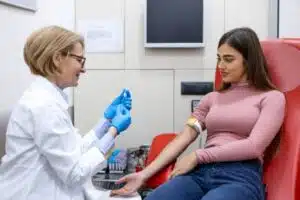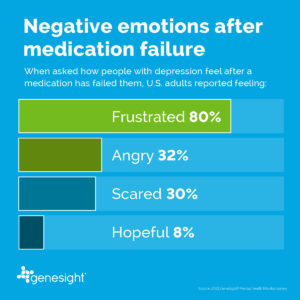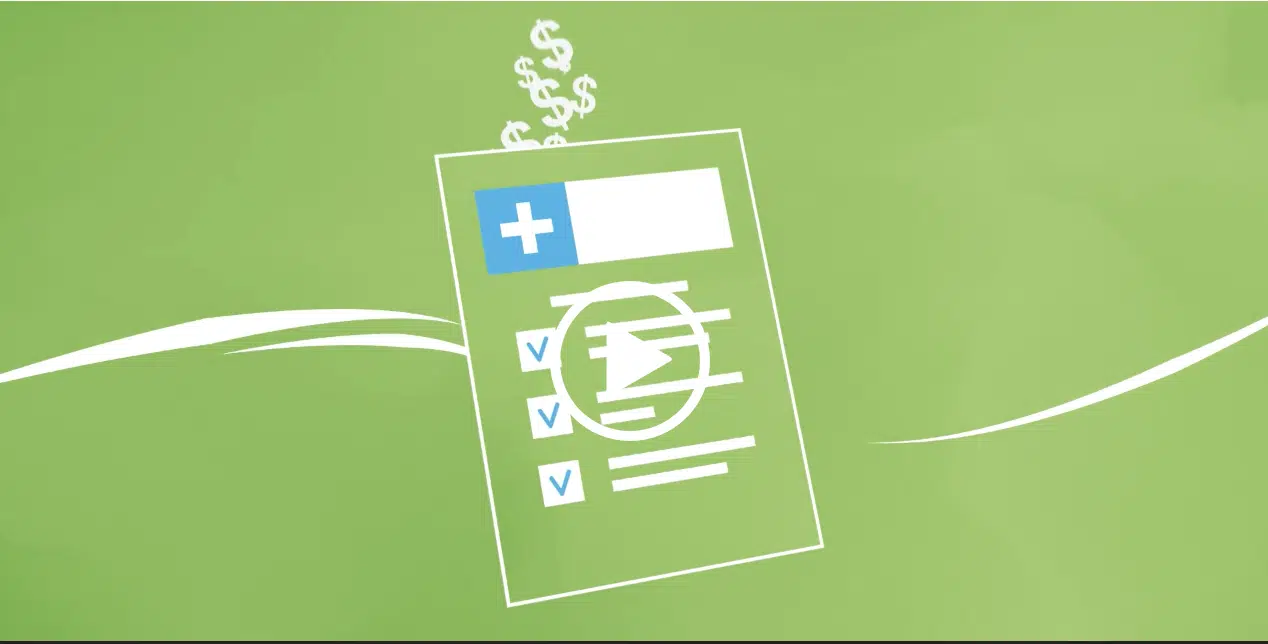The process of being diagnosed with depression is different for every person who experiences it. But for many people, the journey to finding relief from depression symptoms can be tricky to navigate at first.
Psychology professor Jonathan Rottenberg began studying depression recovery after experiencing it himself. He wrote in Healthline:
“Twenty-four years ago, as a young adult, I was brought to my knees by a severe depression that for years refused to budge, and almost took my life.
Getting back on my feet was a halting process of trial and error: I went on leave from my graduate school program in history, I tried medications, underwent psychotherapy, spent time in the hospital.
For a long time, nothing worked.
Just when I thought I would be stuck in a chronic depression forever, I started to get better. Very slowly, but surely, I improved. Eventually I became functional, and then fully regained my health and happiness.”
It’s not unusual to experience a bumpy road like Rottenberg’s when it comes to getting control over depression symptoms. However, there are steps you can take to continue moving forward.
Diagnostic process for depression
Depression is more than just feeling sad or low. While sad feelings usually pass in time, depression may cause a number of mental and physical health symptoms that persist through the weeks and affect how you get through your daily life, according to the National Institute of Mental Health (NIMH) website.
Common symptoms of depression include, according to the website:
- “Persistent sad, anxious, or ‘empty’ mood
- Feelings of hopelessness or pessimism
- Feelings of irritability, frustration‚ or restlessness
- Feelings of guilt, worthlessness, or helplessness
- Loss of interest or pleasure in hobbies or activities
- Decreased energy, fatigue, or being ‘slowed down’
- Difficulty concentrating, remembering, or making decisions
- Difficulty sleeping, early morning awakening, or oversleeping
- Changes in appetite or unplanned weight changes
- Aches or pains, headaches, cramps, or digestive problems without a clear physical cause and that do not ease even with treatment
- Suicide attempts or thoughts of death or suicide”
You may feel one or more of these symptoms during your day. However, it doesn’t necessarily mean you have depression.
“To be diagnosed with depression, an individual must have five depression symptoms every day, nearly all day, for at least 2 weeks. One of the symptoms must be a depressed mood or a loss of interest or pleasure in almost all activities. Children and adolescents may be irritable rather than sad,” according to the NIMH website.
If you think you may be depressed or have another mental health condition, there are a number of mental health professionals who may be able to help. Your primary care provider may be able to diagnose or treat you or may refer you to an appropriate mental health professional to make an appointment to talk about what you’re experiencing.
Can lab tests help with a depression diagnosis?
In short, there’s no diagnostic test for depression. However, your clinician will likely conduct a thorough evaluation and may take some blood work to rule out other conditions.
They will also likely talk to you about your physical and mental health symptoms to help make an accurate diagnosis, according to the NIMH website.

Your provider may use the following as part of diagnosing depression, according to the Mayo Clinic website:
- “Physical exam. Your doctor may do a physical exam and ask questions about your health. In some cases, depression may be linked to an underlying physical health problem.
- Lab tests. For example, your doctor may do a blood test called a complete blood count or test your thyroid to make sure it’s functioning properly.
- Psychiatric evaluation. Your mental health professional asks about your symptoms, thoughts, feelings and behavior patterns. You may be asked to fill out a questionnaire to help answer these questions.
- DSM-5. Your mental health professional may use the criteria for depression listed in the Diagnostic and Statistical Manual of Mental Disorders (DSM-5), published by the American Psychiatric Association.”
Types of depression
Depression, sometimes known as major depressive disorder, can take various forms and cause different symptoms. For some, the symptoms can feel more physical; for others, it can manifest emotionally or behaviorally.
“Symptoms caused by major depression can vary from person to person. To clarify the type of depression you have, your doctor may add one or more specifiers,” according to the Mayo Clinic website.
The Mayo Clinic website states some specifiers could include:
- “Anxious distress — depression with unusual restlessness or worry about possible events or loss of control
- Mixed features — simultaneous depression and mania, which includes elevated self-esteem, talking too much and increased energy
- Melancholic features – severe depression with lack of response to something that used to bring pleasure and associated with early morning awakening, worsened mood in the morning, major changes in appetite, and feelings of guilt, agitation or sluggishness
- Atypical features – depression that includes the ability to temporarily be cheered by happy events, increased appetite, excessive need for sleep, sensitivity to rejection, and a heavy feeling in the arms or legs
- Psychotic features – depression accompanied by delusions or hallucinations, which may involve personal inadequacy or other negative themes
- Catatonia – depression that includes motor activity that involves either uncontrollable and purposeless movement or fixed and inflexible posture
- Peripartum onset – depression that occurs during pregnancy or in the weeks or months after delivery (postpartum)
- Seasonal pattern – depression related to changes in seasons and reduced exposure to sunlight”
When you meet with your provider, they will likely evaluate you for other mental health conditions that may include symptoms that may look like depression, such as bipolar disorder, according to the website.
Starting depression treatment
After a depression diagnosis, your healthcare provider may recommend a course of treatment depending on your symptoms and needs. For Jonathan Rottenberg, treatment included taking medication and undergoing psychotherapy. Psychotherapy is also known as talk therapy or counseling.
“Depression treatment typically involves medication, psychotherapy, or both,” according to the NIMH website. “If these treatments do not reduce symptoms, brain stimulation therapy may be another treatment option. In milder cases of depression, treatment might begin with psychotherapy alone, and medication added if the individual continues to experience symptoms. For moderate or severe depression, many mental health professionals recommend a combination of medication and therapy at the start of treatment.” One example of a newer treatment is the recently FDA-approved version of ketamine, known as intranasal esketamine.
Importantly, a treatment plan should be personalized. For example, for some patients, medication alone may work. For others, regular counseling sessions may be key. For still others who aren’t getting relief, they may consider other forms of treatment or a combination of treatments.
Types of depression medications
There are many different types of antidepressant medications available. The types include those in the list below, according to the Mayo Clinic website:
- “Selective serotonin reuptake inhibitors (SSRIs). Doctors often start by prescribing an SSRI. These drugs are considered safer and generally cause fewer bothersome side effects than other types of antidepressants. SSRIs include citalopram (Celexa), escitalopram (Lexapro), fluoxetine (Prozac), paroxetine (Paxil, Pexeva), sertraline (Zoloft) and vilazodone (Viibryd).
- Serotonin-norepinephrine reuptake inhibitors (SNRIs). Examples of SNRIs include duloxetine (Cymbalta), venlafaxine (Effexor XR), desvenlafaxine (Pristiq, Khedezla) and levomilnacipran (Fetzima).
- Atypical antidepressants. These medications don’t fit neatly into any of the other antidepressant categories. They include bupropion (Wellbutrin XL, Wellbutrin SR, Aplenzin, Forfivo XL), mirtazapine (Remeron), nefazodone, trazodone and vortioxetine (Trintellix).
- Tricyclic antidepressants. These drugs – such as imipramine (Tofranil), nortriptyline (Pamelo ), amitriptyline, doxepin, trimipramine (Surmontil), desipramine (Norpramin) and protriptyline (Vivactil) – can be very effective, but tend to cause more-severe side effects than newer antidepressants. So tricyclics generally aren’t prescribed unless you’ve tried an SSRI first without improvement.
- Monoamine oxidase inhibitors (MAOIs). MAOIs – such as tranylcypromine (Parnate), phenelzine (Nardil) and isocarboxazid (Marplan) – may be prescribed, typically when other drugs haven’t worked, because they can have serious side effects. Using MAOIs requires a strict diet because of dangerous (or even deadly) interactions with foods – such as certain cheeses, pickles and wines – and some medications and herbal supplements. Selegiline (Emsam), a newer MAOI that sticks on the skin as a patch, may cause fewer side effects than other MAOIs do. These medications can’t be combined with SSRIs.”
It may take some time to find a medication that works for you.
Lab tests to help with medication selection
Many people struggle with depression medication trial and error. According to the GeneSight® Mental Health Monitor from Myriad Genetics, Inc., more than half of people diagnosed with depression reported that they have tried four or more depression medications in their lifetime.
This trial-and-error process can leave people with a number of negative feelings. When people with depression take a medication that does not help them, they reported feeling frustrated (80%), angry (32%) or scared (30%). The nationwide survey found that only 8% of people with depression remain hopeful after a depression medication fails them.
“Finding an effective depression medication on the first try can be extremely difficult,” said Gus Alva, M.D., distinguished fellow of the American Psychiatric Association and board certified by the American Board of Psychiatry and Neurology and the American Board of Geriatrics. “The GeneSight Mental Health Monitor survey showed that patients often experience a multitude of negative emotions after medication failure, which can impact their willingness to try other medication options.”
In fact, more than 70% of those diagnosed with depression think it takes weeks or even months to find a medication that works, according to the survey.
As part of the medication selection process, your clinician may order the GeneSight test. The GeneSight test is a simple cheek swab that provides information about how your body may respond to or metabolize certain mental health medications based on your genes. This may include which medications may require dose adjustments, may be less likely to work or may have an increased risk of side effects. The GeneSight test must be ordered by a registered clinician and may be completed in the office or at your home.
Types of psychotherapy options
If your treatment provider recommends therapy after diagnosing depression, you may have different types of therapy options to choose from.
“Psychotherapy (also called ‘talk therapy’ or ‘counseling’) teaches individuals with depression new ways of thinking and behaving and helps with changing habits that contribute to depression. Most psychotherapy occurs with a licensed, trained mental health professional in one-on-one sessions or with other individuals in a group setting. Two effective psychotherapies to treat depression include cognitive behavioral therapy (CBT) and interpersonal therapy (IPT). The use of older forms of psychotherapy, such as dynamic therapy, for a limited time also may help some people with depression,” according to the NIMH website.
Cognitive behavioral therapy (CBT)
“With CBT, people learn to challenge and change unhelpful thinking patterns and behavior to improve their depressive and anxious feelings. Recent advances in CBT include introducing mindfulness principles and the development of specialized forms of therapy targeting particular symptoms, such as insomnia,” according to the NIMH website.
Interpersonal therapy (IPT)
“IPT focuses on interpersonal and life events that impact mood and vice versa. The goal of IPT is to help people improve their communication skills within relationships, establish social support networks, and develop realistic expectations to help them deal with crises or other issues that may be contributing to or worsening their depression,” according to the NIMH website.
What is depression remission?
Depression remission doesn’t always mean your depression symptoms have gone away forever. However, it may be an important step in starting to regain control over them.
“Remission is a phase on the path of depression treatment that comes after a major depressive episode. Whether you’re in traditional talk therapy, taking medication, or exploring other avenues of depression treatment, remission of depression is the goal,” according to an article on the PsychCentral website.
“You’ll typically enter the remission phase when depression symptoms have been reduced, either partially or fully. This often means the oppressive fog that kept you lethargic, unmotivated, and feeling hopeless has lifted, at least somewhat. It’s a good sign that your treatment plan is working for you and a reminder that major depressive disorder (MDD) is not a permanent life sentence,” according to the website.
There’s no standard timeframe for when someone may be able to expect to enter remission after treatment for depression. Some sources define a person as in remission if they’ve had several weeks or months free from depression symptoms, according to the PsychCentral article.
Talking to a healthcare provider
It’s important to remember that many people live happy and full lives after depression treatment. According to the Mental Health America website, more than 80 percent of people treated for depression improve.
If you’ve been experiencing depression symptoms, it may be best to reach out to a healthcare provider for help.
“Talking openly with your doctor and therapist can help you work together to develop an effective depression treatment plan, wherever you happen to be on the path to recovery,” according to the PsychCentral website.
If you’re looking for a therapist, Psych Central’s maintains a mental health support resource with additional information to help you move forward on your journey.
For more information about this and other topics, please visit:
Our articles are for informational purposes only and are reviewed by our Medical Information team, which includes PharmDs, MDs, and PhDs. Do not make any changes to your current medications or dosing without consulting your healthcare provider.
The GeneSight test must be ordered by and used only in consultation with a healthcare provider who can prescribe medications. As with all genetic tests, the GeneSight test results have limitations and do not constitute medical advice. The test results are designed to be just one part of a larger, complete patient assessment, which would include proper diagnosis and consideration of your medical history, other medications you may be taking, your family history, and other factors.
If you are a healthcare provider and interested in learning more about the GeneSight test, please contact us at 855.891.9415. If you are a patient, please talk with your doctor to see if the GeneSight test may be helpful.










